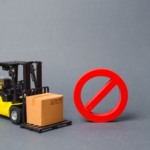U.S. Court Upholds TikTok Ban Amid Record-Breaking Black Friday Sales
With the mounting legal battle and a looming U.S. ban, TikTok’s e-commerce platform, TikTok Shop, delivered a record-breaking 2024 Black Friday. This highlights the platform’s growing influence even as national security concerns threaten its future.



